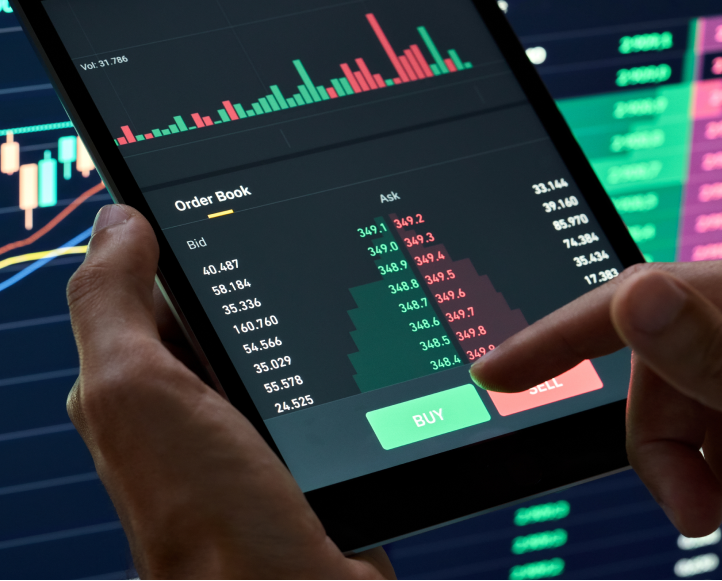
Comprehensive Crypto Trading Asset List
In the rapidly evolving world of cryptocurrency, having access to a well-curated Crypto Trading Asset List click here asset list can be a game changer for traders. This article will provide insights into the various types of cryptocurrencies available for trading, their unique features, and factors to consider when investing in them. By understanding the landscape of digital assets better, traders can make informed decisions and optimize their trading strategies.
What is Crypto Trading?
Crypto trading involves the buying and selling of cryptocurrencies with the intention of making a profit. Traders can either hold these assets long-term or engage in short-term trading strategies, such as day trading or scalping. The cryptocurrency market is known for its volatility, and prices can fluctuate significantly within short periods, presenting both opportunities and risks for traders.
The Importance of a Crypto Trading Asset List
Having a well-organized crypto trading asset list is crucial for several reasons:
- Diverse Options: With thousands of cryptocurrencies available, a comprehensive list helps traders discover new assets that might align with their trading strategy.
- Market Analysis: A curated list provides insights into market trends, allowing traders to identify bullish or bearish patterns based on historical data.
- Risk Management: By knowing the performance and volatility of different crypto assets, traders can manage their risk more effectively.
Popular Cryptocurrency Assets in Trading
Here’s an overview of some of the most popular cryptocurrencies that you might encounter on a crypto trading asset list:
1. Bitcoin (BTC)
As the first and most recognized cryptocurrency, Bitcoin has established itself as a digital gold. It is characterized by its limited supply, being capped at 21 million coins. Most traders consider Bitcoin as a store of value and use it as a benchmark for the entire crypto market.
2. Ethereum (ETH)
Ethereum is more than just a cryptocurrency; it is a platform that enables developers to build decentralized applications (dApps). Its smart contract functionality distinguishes it from Bitcoin, and its continuous upgrades (like Ethereum 2.0) make it a key asset for traders.
3. Binance Coin (BNB)
Initially created to be used for reduced trading fees on the Binance exchange, Binance Coin has evolved into a versatile token used in various applications, including transaction fees, staking, and token sales.
4. Cardano (ADA)
Cardano aims to create a more secure and scalable blockchain platform. Its unique proof-of-stake consensus mechanism and focus on academic research have garnered attention from both investors and developers.
5. Solana (SOL)
Solana has gained popularity due to its high throughput and low transaction costs. It is designed to support decentralized applications and crypto projects, making it an attractive option for traders looking for high-growth potential.
Emerging Cryptocurrencies
Aside from the established coins, there are several emerging cryptocurrencies worth monitoring:

1. Polkadot (DOT)
Polkadot promotes interoperability among different blockchains, allowing them to communicate and share information. This feature can facilitate the exchange of assets and data across various platforms.
2. Chainlink (LINK)
Chainlink is a decentralized oracle network that allows smart contracts on various blockchains to securely interact with real-world data, APIs, and payment systems.
3. Avalanche (AVAX)
Avalanche is known for its high transaction speeds and flexibility. It supports custom blockchains, making it a potential favorite among developers seeking efficient solutions.
4. Terra (LUNA)
Terra focuses on stablecoins and aims to create a balanced financial ecosystem by allowing developers to build decentralized applications that use its stablecoin as a medium of exchange.
Factors to Consider When Selecting Assets
When looking at a crypto trading asset list, consider the following factors:
- Market Capitalization: A higher market cap often indicates stability, while smaller market caps can present more risks and rewards.
- Volume: Daily trading volume can give insights into an asset’s popularity and liquidity. Higher volumes generally mean easier entry and exit points.
- Technology and Use Case: Understanding the technology behind a cryptocurrency and its potential use cases can help in assessing its long-term sustainability.
- Community Support: A loyal and active community can provide insights, promote growth, and help in the overall development of the cryptocurrency.
Trading Strategies
Diversifying your strategy can yield better results. Here are some common trading strategies employed by crypto traders:
1. HODLing
This long-term strategy involves purchasing a cryptocurrency and holding it for an extended period, regardless of market volatility. It often works for well-established cryptocurrencies like Bitcoin and Ethereum.
2. Day Trading
Day traders look to capitalize on short-term fluctuations in price within a single day. This requires analyzing charts and market trends to make quick trades.
3. Swing Trading
Swing trading involves taking advantage of price “swings” in the market. Traders hold onto assets for several days or weeks to capture potential gains.
4. Arbitrage Trading
This strategy involves taking advantage of price discrepancies across different exchanges. Traders buy at a lower price on one exchange and sell at a higher price on another.
Conclusion
Staying informed about the latest cryptocurrencies and market trends is essential for any crypto trader. A well-organized crypto trading asset list not only aids in identifying valuable trading opportunities but also enables traders to navigate the complexities of the market effectively. In addition, understanding various trading strategies and the unique properties of different assets can lead to more successful investment outcomes.
With the cryptocurrency market being as dynamic and innovative as it is, continuous education and adaptation are key to thriving in this space. Whether you are just starting your trading journey or are looking to refine your strategies, leveraging tools like a comprehensive crypto trading asset list is invaluable.

